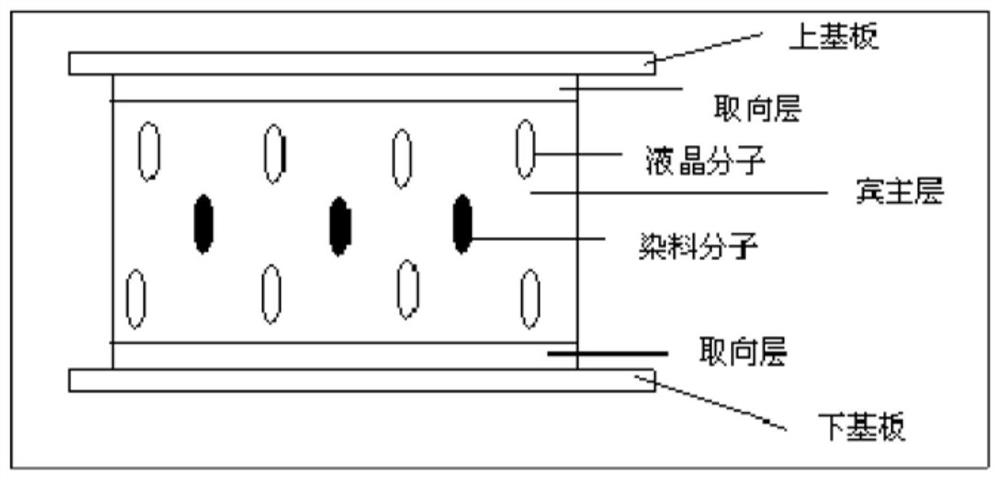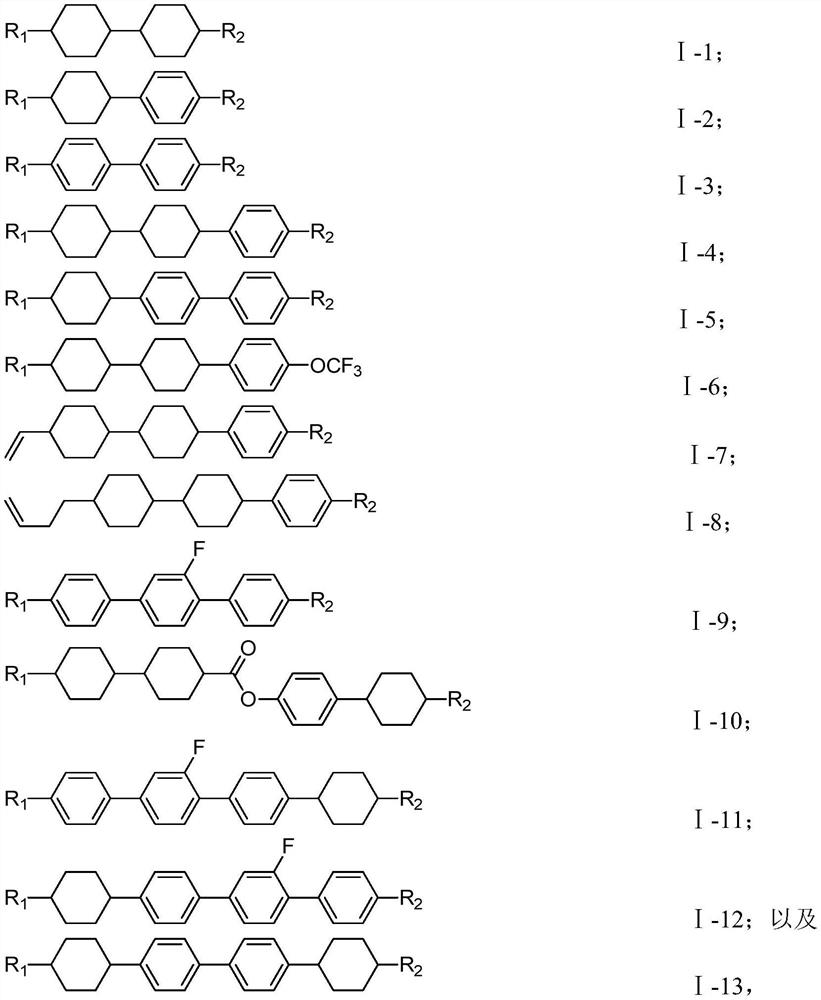A dimming device comprising a guest-host liquid crystal composition
A technology of liquid crystal composition and liquid crystal compound, which is applied in liquid crystal materials, instruments, optics, etc., can solve problems such as energy consumption, and achieve the effect of solving energy consumption and reducing costs
- Summary
- Abstract
- Description
- Claims
- Application Information
AI Technical Summary
Problems solved by technology
Method used
Image
Examples
Embodiment 1
[0118] The parent liquid crystal 1 of Example 1 was formulated in accordance with the respective compounds and weight percentages listed in Table 3, which filled between the two substrates of the liquid crystal display, and the test data as shown in the table:
[0119] Table 3 Composition and ratio of parent liquid crystal
[0120]
[0121] To the parent liquid crystal 1, a 0.35% dye 13 + 0.15% dye 7 + 1% dye 25 formed a guest liquid crystal composition A1, and 0.7% dye 13 + 0.3% dye 7 + 2% dye 25 formed a guest primary liquid crystal composition B1, The host liquid crystal composition is filled with the dimming device of the present invention, which has a bright and dark change by regulating the ambient temperature of the device, and the transmission rate change is shown in Table 4:
[0122] Table 4
[0123] Transmission rate changes (Ming → dark) Binary LCD Composition A1 65%→40% Binary LCD Composition B1 38%→18%
[0124] As can be seen from Table 4...
Embodiment 2
[0126] The parent liquid crystal 2 of Example 2 is formulated in accordance with the various compounds and weight percentages listed in Table 5, which filled between the liquid crystal display two substrates, and the test data is shown in the following table:
[0127] Table 5 Master Liquid Crystal Composition and Ratio
[0128]
[0129] To the parent liquid crystal 2, a 0.35% dye 13 + 0.15% dye 7 + 1% dye 25 formed a guest liquid crystal composition A2, and 0.7% dye 13 + 0.3% dye 7 + 2% dye 25 formed a guest primary liquid crystal composition B2, Its transmittance change is shown in Table 6:
[0130] Table 6
[0131] Transmission rate changes (Ming → dark) Binary LCD composition A2 59%→38% Bential LCD composition B2 39%→18%
[0132] As can be seen from Table 6, the dimming device of the present invention is in a bright state when the ambient temperature is less than 25 ° C; when the device ambient temperature is higher than 25 ° C, the device is in a ...
Embodiment 3
[0134] The parent liquid crystal 3 of Example 3 is formulated in accordance with the respective compounds and weight percentages listed in Table 7, which filled between the two substrates of the liquid crystal display, and the test data is shown in the table below:
[0135] Table 7 Composition and ratio of maternal liquid crystal
[0136]
[0137] To the parent liquid crystal 3, a 0.35% dye 13 + 0.15% dye 7 + 1% dye 25 forms a guest primary liquid crystal composition A3, and the transmittance change is shown in Table 8:
[0138] Table 8
[0139] Transmission rate changes (Ming → dark) Binary LCD composition A3 41%→16%
[0140] As can be seen from Table 8, the dimming device according to the present invention is in a bright state when the ambient temperature is below 50 ° C; when the device ambient temperature is higher than 50 ° C, the device is in a dark state, and is in a darkness. The band is all absorbed.
PUM
| Property | Measurement | Unit |
|---|---|---|
| angle | aaaaa | aaaaa |
Abstract
Description
Claims
Application Information
 Login to View More
Login to View More - R&D
- Intellectual Property
- Life Sciences
- Materials
- Tech Scout
- Unparalleled Data Quality
- Higher Quality Content
- 60% Fewer Hallucinations
Browse by: Latest US Patents, China's latest patents, Technical Efficacy Thesaurus, Application Domain, Technology Topic, Popular Technical Reports.
© 2025 PatSnap. All rights reserved.Legal|Privacy policy|Modern Slavery Act Transparency Statement|Sitemap|About US| Contact US: help@patsnap.com



